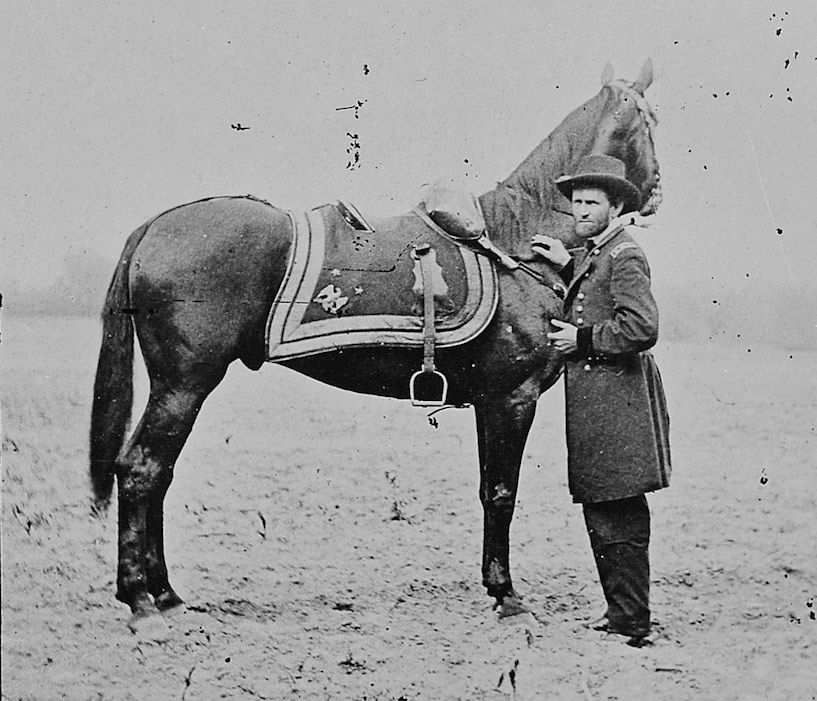Editor's Corner

The Cincinnati Society
While the origins of the foundation of Rome during the 8th century BC are not entirely clear, the city-state took centuries to become the great empire that is known to history. Nearly half a millennium before the birth of Julius Caesar, there was a farmer named Lucius Quinctius Cincinnatus who left his plow to fight for, and later govern, the famous city-state. After being called twice from his plow to fight and then to rule Rome, he eventually left his seat of power of his own volition and returned to his farm. Nearly three millennia of admirers resulted for this man who preferred the farm to world dominion.
George Washington, an advocate of Cincinnatus, did the same when he willingly left the United States Presidency for Mount Vernon in 1797.
Cincinnatus remained an exemplar even before the U.S. was a nation. He personified the modest farmer-turned-combatant, and many soldiers from the Revolutionary War considered him a primeval mentor. Not surprisingly, a number of veteran Continental army officers formed The Cincinnati Society. Established by Henry Knox – later President Washington’s Secretary of War – this society, begun in 1783, was organized to assist American veterans of the recent war and to keep unity among the colonies before the Constitution was ratified. Even the venerable George Washington was a member.
When the Northwest Territory (the future states of Ohio, Indiana, Kentucky, Illinois, Michigan and Wisconsin) was at its nascence, it was soon flooded with settlers after the Revolution. One of the burgeoning towns on the Ohio River was aptly named Cincinnati. The territorial governor at the time, General Arthur St. Clair, had been a member of The Cincinnati Society, and wanted the memory of the organization, and its namesake, perpetuated.
In 1822, Ulysses S. Grant was born in the river town of Point Pleasant, Ohio, located a handful of miles east of Cincinnati. The name of the Ohio city stayed with him, along with memories of his childhood home. Though he was officially from the state of Illinois when the Civil War began, Grant, who in fact attempted a farmer’s life himself after resigning from the antebellum military, never forgot his Ohio roots. That is one reason why he named his favorite war horse Cincinnati.
Both Grant and Lee had numerous horses during their tenures as high-ranking Civil War generals. Grant also owned equines named Egypt, Jack, and Jeff Davis (the last named because he was found in Mississippi during the Vicksburg Campaign). Cincinnati, though, was Grant’s preferred companion, as Lee’s favorite was the famous Traveller – although Lee also rode horses named Lucy Long, Ajax, and the Roan. Lee rode Lucy Long at Gettysburg, after Traveller, being a bit recalcitrant, threw Lee during the campaign, causing him to suffer from a sprained wrist during the battle.
Lee rode Traveller at Appomattox Court House, when he bade an everlasting farewell to his troops. Grant, gracious in the Union victory at Appomattox, rode Cincinnati.
Cincinnati was a large bay horse, the colt of a thoroughbred. Grant was so protective of Cincinnati that he rarely allowed others to ride him. One of the few was Abraham Lincoln, to whom Grant loaned his horse while the President was visiting his favorite general at City Point during the last days of the Civil War.
Cincinnati died during Grant’s presidency, passing on in 1878. Grant died in 1885.
On almost all equestrian statues of General Grant, he is perched atop Cincinnati.
It is all about the farm, and home, after all – as the ancient Cincinnatus knew.
Pass the word.

Ulysses S. Grant & Cincinnati
(National Archives)

Gettysburg, PA
The Gettysburg Experience, P.O. Box 4271 Gettysburg PA 17325 Phone 717.359.0776

© 2008 - 2024 Princess Publications, Inc.

Home
| Maps
| Directions
| Event Calendar
| Contact
| Advertisers
| Advertise with Us
